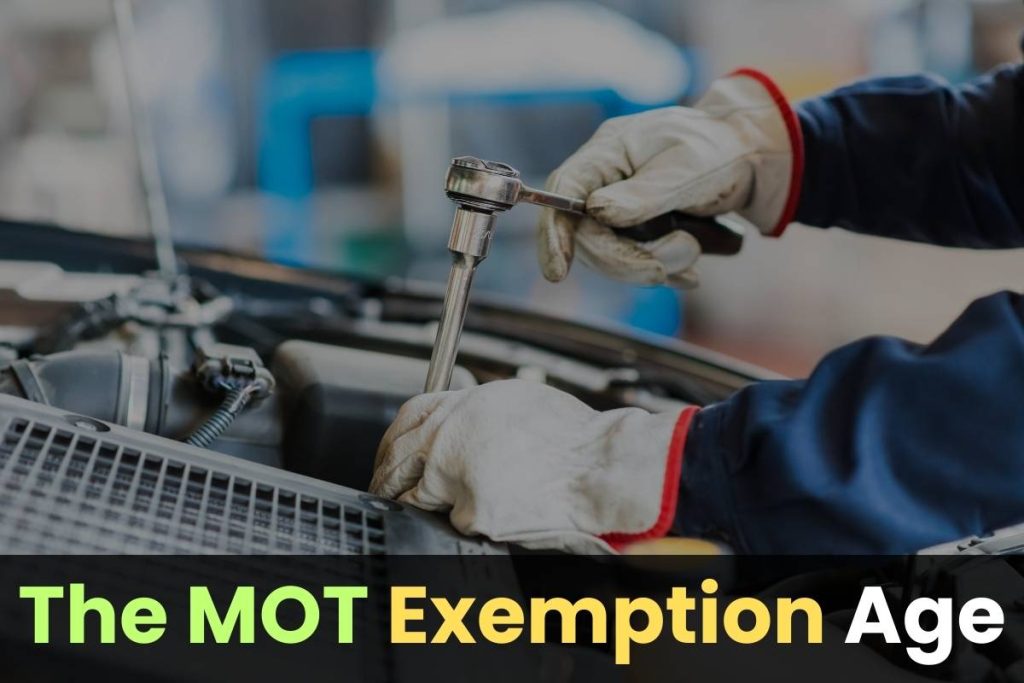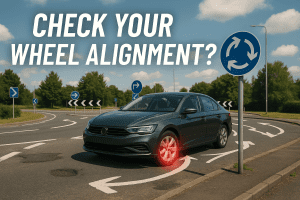
When does a car become mot exempt?. Its a common question for a vehicle owner. Every vehicle owner understands the vital role that safety plays on the roads. To ensure that vehicles meet strict safety and environmental standards, In world many countries around require regular testing and inspection. In this context, the Ministry of Transport (MOT) test emerges as a cornerstone of vehicle safety assessment. This test evaluates various components and systems of a vehicle.Its brakes and lights to its emissions and steering, to ensure they meet the necessary safety criteria.
The subject of our discussion lies at the intersection of vehicle safety and regulatory compliance: the MOT exemption age and the intriguing question – when does a car become MOT exempt. In this article, we will delve into the mechanics of the MOT test. Its significance for road safety and the circumstances. Which a vehicle is no longer required to undergo this annual evaluation. Central to our exploration is the keyword “when does a car become MOT exempt,” shedding light on a topic that often piques the curiosity of vehicle owners and enthusiasts alike.
Understanding the MOT Test:
The MOT test, a fundamental aspect of vehicle safety oversigh. Its serves as a comprehensive evaluation ensuring. Its vehicles adhere to rigorous safety and environmental benchmarks. It stands as a crucial measure to ascertain the roadworthiness of vehicles and prevent potential hazards on the streets. During an MOT test, a range of critical components and systems are meticulously examined. These encompass pivotal aspects such as brakes, lights, emissions, steering, suspension, and more. By scrutinizing these vital elements. The test aims to identify any shortcomings or faults. Its could undermine both the vehicle’s operational integrity and the safety of its occupants. As well as other road users. Importantly, regular MOT tests play a vital role in not only pinpointing existing issues but also preemptively addressing potential problems. This proactive approach ensures that any defects are promptly rectified, mitigating the risk of accidents resulting from compromised vehicle performance. In essence, the MOT test’s significance extends beyond being a mere regulatory requirement – Its really fantastic! serves as a guardian of road safety by actively identifying and addressing vehicular concerns. Thereby contributing to safer and more secure roadways for everyone.
The Age Factor:
Central to the concept of MOT exemption is the age factor.Which plays a pivotal role in determining when a vehicle is no longer obligated to undergo the annual test. Typically, when a vehicle surpasses a specific age threshold, often around 40 years or as stipulated by local regulations. Now! it becomes eligible for MOT exemption. This age-based criterion acknowledges the transition of vehicles from regular use to historical or classic status. However, this exemption doesn’t compromise safety; owners of MOT-exempt vehicles are still responsible for ensuring their cars meet high safety standards. Ultimately, the age factor strikes a balance between preserving automotive heritage and upholding contemporary safety expectations, contributing to the harmonious coexistence of past and present on our roads.
Benefits and Concerns of MOT Exemption:
Benefits
MOT exemption extends vehicle owners a welcome array of advantages. Foremost, it reduces the financial strain associated with testing costs, freeing resources for other vehicle-related needs. Administrative hassles are likewise alleviated, sparing owners the time and effort involved in scheduling and paperwork.
Concerns
However, this exemption also raises concerns deserving attention. Chief among these is road safety. By bypassing annual safety evaluations, exempt vehicles might harbor unnoticed issues that compromise safety for occupants and fellow road users. Additionally, environmental considerations come into play, as emissions assessments are a crucial component of MOT tests. Exempt vehicles could inadvertently contribute to heightened pollution levels.
Mitigation
To counter these concerns, owners of MOT-exempt vehicles hold the key. While not mandatory, voluntary maintenance and regular inspections are essential to ensuring safety and emission standards are met. By embracing this proactive approach, vehicle owners can preserve the benefits of MOT exemption while upholding their duty to road safety and the environment.
Applying for MOT Exemption:
Process Overview: When does a car become mot exempt?. Its a thinnk before test. Applying for MOT exemption is a step that offers relief for owners of eligible vehicles. But the procedure can vary based on the region or country in which you reside. The overarching principle, however, remains consistent. it’s a means of recognizing and accommodating vehicle. Its have transitioned into the realm of historical or classic status.
Regional Variations: It’s important to note that the specifics of applying for MOT exemption can differ depending on your location. Regulations, eligibility criteria, and documentation requirements might vary, underscoring the necessity of consulting local authorities or official sources for precise guidance.
Steps to Seek MOT Exemption:
While the exact process might differ, a general guideline for seeking MOT exemption includes the following steps:
- Research and Eligibility: Begin by confirming whether your vehicle meets the age criteria for MOT exemption. This age threshold can vary, but it’s typically linked to the recognition of historical significance.
- Documentation Gathering: Collect all necessary documents, such as proof of vehicle ownership, insurance, and any historical information that supports your vehicle’s eligibility.
- Application Submission: Fill out the appropriate application form, available through relevant authorities. Ensure that all required fields are completed accurately.
- Vehicle Inspection: Depending on local regulations, your vehicle might need to undergo a comprehensive inspection to verify its condition and eligibility for exemption.
- Supporting Evidence: Attach any supporting evidence, such as photographs, historical records, or documentation highlighting your vehicle’s cultural or historical significance.
- Submission and Review: Submit your application along with the required documents. The authorities will review your submission to determine whether your vehicle qualifies for MOT exemption.
- Notification: You will receive notification regarding the status of your application. If approved, you will be informed of the next steps, which might include additional inspections or documentation.
- Ongoing Responsibility: If your vehicle is granted MOT exemption, remember that your responsibility to maintain safety and emissions standards doesn’t diminish. Regular maintenance, voluntary inspections, and ensuring the vehicle’s roadworthiness remain crucial.
Maintaining Safety Standards:
Importance of Regular Vehicle Maintenance: Regular maintenance remains a cornerstone of vehicle ownership, even for those enjoying the privilege of MOT exemption. While exempt from annual tests, classic or historic vehicles require consistent upkeep to guarantee their safety and roadworthiness. Neglecting maintenance can lead to unnoticed issues that compromise both the vehicle’s integrity and the safety of its occupants.
Tips for Classic or Historic Vehicle Owners:
- Routine Inspections: Establish a regular schedule for thorough visual inspections. Examine brakes, lights, tires, and steering components to identify any signs of wear, damage, or deterioration.
- Fluid Checks: Regularly check fluid levels, including oil, coolant, and brake fluid. Proper fluid levels are essential for maintaining optimal performance and preventing potential breakdowns.
- Tire Maintenance: Keep tires properly inflated and examine them for wear patterns. Old tires can degrade over time, impacting both safety and handling.
- Electrical Systems: Ensure lights, indicators, and other electrical components are in working order. These components contribute significantly to road safety, especially during low visibility conditions.
- Emissions Control: Even if exempt from emissions testing, consider maintaining your vehicle’s emission control systems. This not only reduces environmental impact but also ensures efficient engine performance.
Role of Professional Inspections: Professional inspections are invaluable in safeguarding the safety of MOT-exempt vehicles. Engage certified mechanics or specialists experienced in classic car maintenance. They possess the expertise to identify hidden issues, from corroded brake lines to compromised suspension components.
Routine Maintenance Practices:
- Oil Changes: Regular oil changes ensure proper engine lubrication, promoting longevity and optimal performance.
- Brake Service: Periodic brake inspections and maintenance prevent brake fade and ensure reliable stopping power.
- Suspension Checks: Suspension components influence handling and stability. Routine checks address issues that could compromise road safety.
- Safety Restorations: If undertaking restorations, prioritize safety-related upgrades, such as modern seatbelts or improved lighting systems.
Future Changes and Considerations:
Evolution of MOT Exemption Regulations: It’s essential to acknowledge that the landscape of MOT exemption regulations is not static; it might undergo shifts and modifications over time. Changes can be prompted by various factors, including advancements in vehicle technology, safety standards, and evolving environmental concerns. These alterations are aimed at maintaining a balance between preserving automotive heritage and ensuring contemporary road safety.
Its a big question as when does a car become mot exempt?. But with Staying Informed About Local Regulations: As regulations can vary from region to region, it’s imperative for vehicle owners to stay informed about any alterations in MOT exemption criteria. Keep an attentive eye on updates from local authorities or transportation departments. Online resources and official communication channels can serve as valuable sources of information regarding shifts in exemption guidelines.
The Future of MOT Testing and Exemption Policies: Looking ahead, the future of MOT testing and exemption policies might encompass several potential directions. One trajectory involves the integration of modern testing methods, utilizing technology to conduct more efficient and accurate safety assessments. This could facilitate a smoother testing process while upholding rigorous safety standards.
Furthermore, discussions around exemptions might extend beyond age-based criteria. Future policies could incorporate additional factors, such as emission levels, vehicle modifications, or historical significance. This nuanced approach could strike a balance between recognizing vehicles of importance and ensuring they meet evolving safety and environmental benchmarks.
Conclusion:
So, after learning about MOT exemption, we see how old cars can stop doing yearly tests. And when does a car become mot exempt? its a big question. But even if a car doesn’t need tests, safety is still super important. It’s our job to take good care of our cars, no matter if they’re old or new. Regular checks and fixes keep us safe and help others on the road too. Let’s remember this and always be careful drivers, making sure our cars are safe for everyone sharing the road with us. By the way if you want to test your MOT in Milton Keynes, MK12 Autocare Ltd is the Best MOT Test Service Centre In Milton Keynes!






